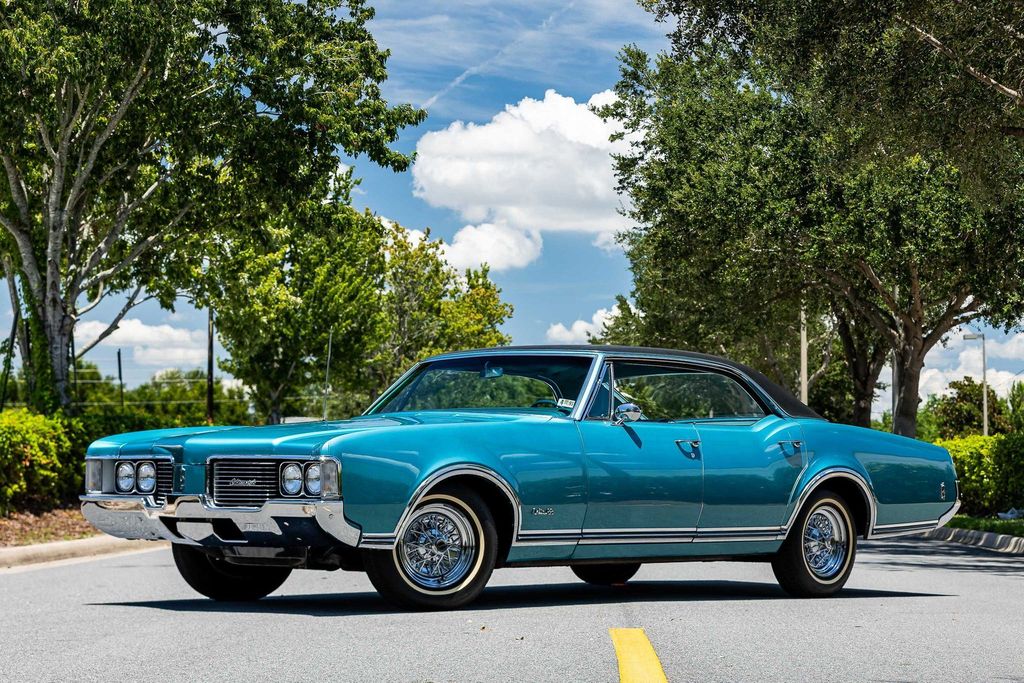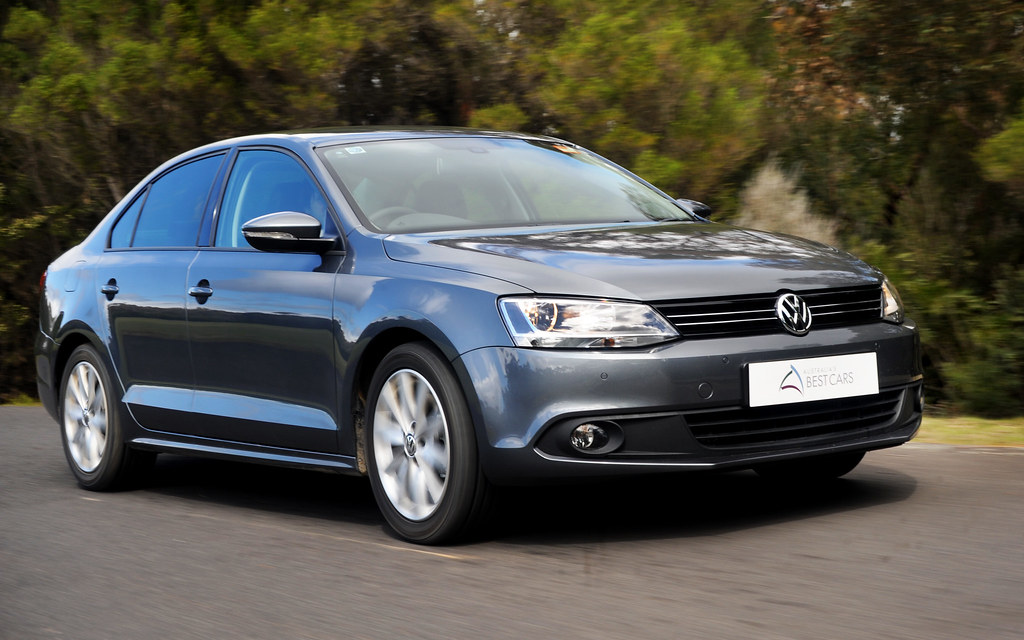
In an era where most Americans juggle multiple subscriptions for everything from streaming entertainment to meal kits, a new frontier in recurring payments has emerged: the automobile. According to Deloitte’s 2024 Digital Media Trends report, U.S. consumers are already paying an average of $48 per month on video-streaming subscriptions alone, with roughly half expressing they “pay too much” for these services. This widespread sentiment, often dubbed ‘subscription fatigue,’ highlights a landscape where consumers are increasingly scrutinizing the value proposition of ongoing monthly commitments.
Yet, despite this backdrop, automakers are increasingly venturing into the subscription game, asking vehicle owners to pay monthly or annual fees for services that were once either standard or a one-time purchase. These offerings range from enhanced connected services and convenience features to critical safety functionalities and even performance boosts. This shift represents a significant evolution in the automotive business model, moving beyond the traditional one-time sale of a physical product to an ongoing relationship centered on service delivery and software-defined capabilities.
This article delves deep into the multifaceted reasons why car subscription services are not merely a passing fancy but are rapidly gaining attention and reshaping the future of mobility. We’ll explore the technological innovations, strategic imperatives of automakers, historical influences, and the evolving consumer landscape that collectively underpin this transformative trend, setting the stage for a new era of automotive consumption.

1. **Automakers’ Strategic Shift to Subscriptions** The most fundamental driver behind the surge in car subscription services is a deliberate and strategic pivot by automakers themselves. They are increasingly getting into the subscription game, asking vehicle owners to pay monthly or annual fees for connected services, convenience and safety features, and even performance enhancements. This is a dramatic departure from the long-standing model where such capabilities were often included in the initial purchase price or as one-time, optional upgrades.
This shift is not merely about adding new revenue streams; it’s about fundamentally rethinking the relationship between manufacturer, vehicle, and consumer. Automakers aim to transform the vehicle into a platform for continuous service delivery, much like a smartphone or a smart home device. This strategic reorientation is vital for establishing more predictable and steady revenue streams, a stark contrast to the cyclical nature of traditional vehicle sales which are heavily dependent on economic fluctuations and consumer buying patterns.
For instance, many of these features were previously standard equipment or options paid for at the time of a vehicle purchase, meaning consumers are now being asked to pay for access to capabilities they might have once considered inherent to their car. This demands a clear articulation of value from the automakers, demonstrating how subscriptions offer enhanced flexibility, personalization, or access to cutting-edge technology that justifies an ongoing fee.
This transition reflects a concerted effort by the automotive industry to evolve its business model in response to changing market dynamics and consumer expectations. It’s an acknowledgment that the value of a vehicle can extend far beyond its initial sale, residing in the continuous delivery of software-enabled services and features throughout its lifespan. This strategic imperative is reshaping everything from vehicle design and manufacturing processes to sales, marketing, and customer relationship management.
Read more about: Beyond the Price Tag: 15 Game-Changing Trends Shaping Luxury Vehicles Around the $80,000 Mark to Rival $150,000+ Models in 2025

2. **Enabled by Advanced Connectivity and Software** The very existence and proliferation of these subscription services are intrinsically linked to the advancements in vehicle technology, specifically the ever-growing connectivity enabled by the latest software defined vehicle (SDV) architectures. Modern cars are no longer just mechanical constructs; they are increasingly complex, mobile computing platforms capable of receiving and processing vast amounts of data. This technological foundation is what makes over-the-air updates possible.
These SDV architectures underpin new vehicles, allowing for the seamless sending of over-the-air updates. This capability is analogous to how smartphones receive software updates, enabling vehicle owners to download new applications, activate novel features, or enhance existing functionalities directly to their cars. It’s a transformative capability that eliminates the need for dealership visits for software-based upgrades, offering unprecedented convenience and agility.
Without this robust connectivity and sophisticated software infrastructure, the concept of activating or enhancing vehicle features remotely through a subscription model would be entirely infeasible. The ability to deploy new functionalities and improvements wirelessly transforms the vehicle from a static product at the point of sale into a dynamic, evolving digital asset that can be continuously improved and customized over its lifetime.
The evolution of in-car connectivity, leveraging technologies like ubiquitous 5G, is critical to this paradigm shift. It ensures that vehicles are always connected, allowing for real-time data exchange and feature activation. This constant digital link provides the essential pipeline for subscription services, enabling automakers to deliver new value propositions and maintain ongoing engagement with their customer base throughout the vehicle’s operational life.
Read more about: Unleash Your PS5’s Full Potential: Essential Settings to Optimize Your Gaming Experience

3. **Monetization of Software-Centric Features** As vehicles become increasingly software-centric, automakers have identified a significant opportunity to monetize features that can be activated or enhanced through software updates. This shift away from a pure hardware sales model towards a blend of hardware and recurring software services is a powerful financial incentive driving the industry’s embrace of subscriptions. It represents a pathway to generate more stable and predictable revenue streams, a welcome alternative to the inherently lumpy and cyclical nature of traditional vehicle sales.
Subscription services provide a steady revenue stream as opposed to traditional one-time vehicle sales, offering a more resilient financial foundation for automakers. This shift allows companies to project earnings with greater certainty and potentially achieve higher valuation multiples in financial markets, as recurring revenue models are generally favored by investors. The long-term financial benefits are a key driver of this strategy.
The ambitions articulated by industry leaders underscore the immense financial potential. For example, GM CEO Mary Barra announced a bold goal for the company to generate an impressive $20 to $25 billion annually through subscription services by 2030. Similarly, Ford CEO Jim Farley highlighted the company’s success, stating that the automaker has made “hundreds of millions” on software with gross margins over 50 percent and expects to earn “10x that in the coming years.”
These ambitious targets are not just aspirational figures; they reflect a strategic commitment to transforming the core business model. The high gross margins reported on software-related services demonstrate a compelling profitability argument for pursuing subscriptions. By monetizing features post-purchase, automakers can unlock additional value from each vehicle sold, extending the revenue generation period far beyond the initial transaction and creating a lucrative, ongoing relationship with the customer.

4. **Historical Precedent with Telematic Services (OnStar)** While the current wave of car subscriptions might seem novel, the concept of automakers offering recurring services is far from new. General Motors, for instance, launched OnStar almost three decades ago, and this pioneering telematic service has largely been a success, setting a crucial precedent for today’s subscription landscape. OnStar demonstrated early on that consumers were willing to pay for valuable, ongoing services delivered through their vehicle.
OnStar-style “telematic” services, enabled by an in-vehicle cellular modem, quickly spurred imitation across the industry. Other automakers followed suit, offering similar services such as automatic crash notification, emergency roadside assistance, and various other convenience features. This widespread adoption underscored the commercial viability and consumer appeal of connected car services, laying essential groundwork for the expansion of subscription models.
Andrew Hart, CEO of SBD Automotive, highlighted key strategies that contributed to OnStar’s success. GM effectively set up a separate organization dedicated to selling services and ensured its inclusion across every brand and car line. Crucially, salespeople were incentivized to sign customers up, often collecting credit card information so subscriptions would automatically roll over once free trial periods ended, demonstrating a savvy approach to customer retention.
With the advent of ubiquitous 5G in-car connectivity and the widespread use of smartphones, these services have expanded dramatically. Today, they encompass remote door locking and unlocking, vehicle location services, checking an EV’s charge status, and numerous other features, all accessible via an automaker’s app. The evolution from basic telematics to comprehensive app-driven services illustrates the continuous growth and potential of this segment.

5. **Emulating Tech Companies and Digital Transformation** For a decade or more, automakers have declared their intention to operate more like tech companies, aiming to shift from simply moving metal to mastering software and subscriptions. This aspiration for digital transformation is a significant driver of the subscription model, reflecting a desire to capture value in the digital realm and enhance customer experiences in line with modern expectations. However, this transition is fraught with challenges.
Automakers have continued to struggle with this profound shift, facing hurdles such as ensuring the underlying operational software in their vehicles is robust and reliable. GM’s recent issues with its all-electric, software-heavy vehicles serve as a stark reminder of the complexities involved in this digital metamorphosis. Developing sophisticated, bug-free software at automotive scale is a different beast from traditional mechanical engineering.
It remains to be seen whether car companies truly possess the inherent technical, organizational, and marketing capabilities to fully emulate tech giants who have pioneered and perfected the subscription model. Their traditional structures and development cycles are often ill-suited for the rapid iteration and continuous deployment common in the software world, necessitating significant internal restructuring and cultural change.
Recognizing these capability gaps, some automakers are actively turning to established tech giants such as Amazon, Google, and Microsoft for partnerships. Fanni Li of S&P Global noted that “Partnerships with companies like Google with its Android Automotive OS allow OEMs to offer familiar and user-friendly interfaces while focusing on vehicle-specific integrations,” essentially leveraging existing expertise.
This collaborative approach, often involving ditching Apple CarPlay in favor of Google built-in systems, enables car companies to develop their own apps while integrating familiar services like Google Assistant, Maps, and Play Store. As Kevin Mixer of Gartner explained, “The goal is to take control of the overall experience, and it helps automakers become much more aligned to the digital experiences that all of us are looking for in our day-to-day lives.” This strategic alignment is crucial for meeting consumer expectations in a digitally-driven world.

6. **Consumer Perception vs. Reality: Openness to Flexibility** Initial forays into car subscriptions have been met with a degree of harsh criticism online, particularly when automakers attempted to charge for features previously included or considered fundamental. BMW, for example, famously ceased charging a subscription for heated seats after significant consumer backlash, and similarly dropped its $80 annual fee for Apple CarPlay and Android Auto, highlighting the immediate negative reaction to perceived ‘paywalls’ for basic functionalities.
However, despite these well-publicized incidents of pushback, data from S&P Global suggests that the “perceived outrage doesn’t match reality” for the general consumer. This nuanced perspective indicates that while some specific charging models faced resistance, the broader concept of car subscriptions is not universally rejected. Consumers are more open to these services than the vocal online criticism might suggest, particularly when certain conditions are met.
The study found that customers are receptive to subscription features and services if they offer flexibility, allowing them to tailor their vehicle to their individual needs and preferences. The ability to opt in or opt out of specific features provides a sense of control and personalization that resonates with modern consumers who are accustomed to customizable digital experiences. This flexibility is a key differentiator.
Fanni Li further clarified this, stating, “While some consumers are resistant to paying ongoing fees for features previously included in the vehicle’s purchase price, others appreciate the flexibility and personalization that subscriptions offer.” This highlights a segmentation within the consumer base, where value is perceived differently based on individual usage patterns, climate, and financial considerations.
Key factors influencing consumer acceptance include the frequency of use and the cost of a feature if purchased outright. For instance, if a car owner rarely uses heated seats because they live in a warm climate, paying an ongoing subscription for it might be more appealing than incurring a significant upfront cost for a seldom-used feature. This demonstrates that practical utility and cost-effectiveness play a crucial role in shaping consumer willingness to subscribe.

7. **Appeal of Safety and Driver-Assist Features** Among the array of features being offered through subscription models, safety and driver-assist functionalities stand out as particularly appealing to consumers. Certain types of connected services consistently earn high satisfaction rates, underscoring their perceived value. Safety features, such as automatic high-beams and dashcams, garnered an impressive 89 percent satisfaction rate, the highest among all connected services surveyed.
Beyond basic safety, advanced driver assist systems and connected navigation services are also among the most popular subscription features. This indicates a strong consumer preference for technologies that enhance the driving experience, improve safety, and offer greater convenience, especially for critical functions that directly impact their daily commute or long-distance travel. The tangible benefits of these features often outweigh the cost for many users.
The high satisfaction and popularity of these features are likely due to their substantial upfront costs when purchased as part of a new vehicle. Driver assist features, such as automated hands-free highway driving, can significantly add to the total sticker price of a car. A subscription model, however, offers the advantage of stretching these costs over time, making advanced technologies more accessible to a broader range of consumers.
Kevin Mixer provided insight into the practical appeal of this model, suggesting, “Maybe I need it for a weekend, or I need it for a trip, but I don’t use it every day. So not paying for that feature in the purchase price has appeal.” This pay-as-you-go or subscribe-as-needed approach for high-value but intermittent features aligns perfectly with flexible consumer lifestyles and budget considerations.
Furthermore, an S&P Global worldwide survey found that allowing consumers to experience these connected services during a free trial period significantly improves the odds of them continuing as subscribers. The survey revealed that 72 percent of consumers would purchase a subscription at the end of their trial, and 86 percent would renew their paid subscription when it ends, demonstrating the power of direct experience in converting interest into sustained engagement.
Read more about: Navigating the Automotive Minefield: A Consumer Reports Guide to 10 Vehicles with Notoriously High Repair Costs

8. **The Role of Subscriptions in Igniting Automotive E-commerce**Car subscription services are not merely changing how we access vehicles; they are also acting as a potent catalyst for the broader digital transformation of the automotive retail industry. As a digitally sold product, subscriptions represent a crucial gateway to e-commerce, offering a new and remarkably convenient alternative to traditional leasing and ownership models online. This shift is particularly significant given that, apart from used car sales, the automotive sector has historically lagged in online penetration, with B2C car sales in Europe and the US still predominantly in the single digits for e-commerce.
For an industry often characterized by high customer acquisition costs, the benefits unlocked by e-commerce are nothing short of game-changing. Lowering sales expenses and enabling scalable growth are critical advantages that subscriptions bring to the fore. They create an accessible online pathway for consumers to engage with automotive brands, potentially converting reluctant buyers who might hesitate at a full purchase into subscribers. This initial digital interaction can foster brand loyalty and even lead to eventual full vehicle ownership, solidifying the customer relationship.
Beyond direct sales, this push into e-commerce provides vendors with a rich and invaluable repository of customer knowledge. Digital data, gathered from subscription interactions, offers profound insights into consumer preferences, usage patterns, and engagement levels. This data-driven understanding allows automakers to refine their offerings, personalize marketing efforts, and ultimately create a more tailored and satisfying customer journey. It transforms the sales process from a transactional event into an ongoing, informed relationship, mirroring the data-centric approach of leading tech companies.

9. **Accelerating Electric Vehicle Adoption**One of the most compelling broader market implications of car subscription services is their significant potential to accelerate the adoption of electric vehicles (EVs). For many existing or first-time car owners, the prospect of EV ownership remains an unfamiliar experience, often accompanied by concerns about range, charging infrastructure, and overall cost. A subscription model effectively lowers these barriers to entry, providing a low-risk opportunity for users to “try out” EV ownership without the long-term commitment of a purchase or lease.
This flexibility is a major benefit, allowing consumers to experience the practicalities of an EV in their daily lives, understanding its advantages and limitations firsthand. This direct experience is often far more persuasive than theoretical knowledge. Moreover, for manufacturers, making EVs available through subscription providers helps hedge their production risks. It reduces the uncertainty surrounding production volumes, ensuring a consistent market for their burgeoning electric fleets, which is especially beneficial for new OEMs looking to establish their presence.
The impact is already measurable. Finn, a notable subscription provider, reported that EVs currently account for an impressive 26% of their subscription sales. This figure stands in stark contrast to the 13% share of overall new-car sales accounted for by EVs in Germany during the first six months of 2022. Such statistics clearly demonstrate how subscription services are outpacing traditional sales in driving EV uptake, serving as a powerful force in the transition to more sustainable mobility solutions.
Read more about: From Showroom Shine to Garage Grind: 15 Vehicles That Left Owners Longing for a Refund
10. **Understanding the Diverse Subscription Customer**The early assumptions about the typical car subscription customer, often stereotyped as young, hip urbanites seeking maximum flexibility and premium services, have largely been debunked by real-world data. Insights from providers like Finn reveal a far broader and more diverse audience. For instance, half of Finn’s customers are under 40, significantly younger than the average new-car buyer (typically 50 years old), and a remarkable 78% did not drive a new car prior to subscribing, demonstrating market expansion.
Crucially, these customers are highly value-minded. While product variety is important, consumers prioritize price over contract term flexibility. Eight out of ten consumers put price above flexibility, and 85% of Finn’s customers opt for a 12-month subscription period, showing a clear preference for cost-effectiveness. Finn’s most popular car, priced at €540 a month, further illustrates that “value” is a primary driver, with it being the most cited purchase criterion in surveys.
Subscriptions also offer a more transparent and realistic picture of ownership costs, as the monthly fee typically covers insurance, taxes, licensing, and maintenance. This clarity can be a significant draw, especially for those who underestimate the total cost of car ownership. Furthermore, the customer base extends beyond major metropolitan areas; Finn serves customers from over 1,000 cities and towns in Germany, with the majority (62%) residing in cities of under half a million people, showcasing a widespread appeal. The market also includes a significant B2B segment, representing 21% of Finn’s business, highlighting its potential for targeting small-to-medium enterprises.
Read more about: Beyond the Red Carpet: How A-Listers Master the Art of Celebrity Branding in the Digital Age

11. **Navigating the Complexities of Unit Economics for Profitability**While the appeal of car subscriptions is clear, their long-term viability hinges on mastering intricate unit economics to ensure profitability. The business model, with its heavy assets, significant upfront capital requirements, and substantial marketing expenditures, presents daunting challenges. However, the experience of integrated providers like Finn demonstrates that financial sustainability is achievable, often with companies targeting profitability within one to two years by achieving sufficient scale—typically 20,000 to 30,000 customers for independent players.
Profitability in the subscription business is not a single factor but a delicate balance across five key levers. Shrewd vehicle sourcing through direct OEM partnerships allows providers to negotiate attractive bulk purchase discounts, which become increasingly important as supply shortages resolve. Simultaneously, optimizing pricing and vehicle utilization is critical to remain competitive while ensuring each unit generates sufficient revenue, striking a sweet spot for maximizing asset value.
Third, efficient fleet management and operations, from minimizing maintenance costs on new cars to optimizing logistics for delivery and returns, directly impact the bottom line. Rigorous attention to these operational details, without compromising asset value or customer relationships, is paramount. Additionally, professional online marketing tools and techniques are vital for optimizing click-through conversion rates and targeting spending effectively, ensuring customer acquisition costs remain manageable.
Finally, remarketing stands out as the strongest determinant of profitability. The ability to effectively resell vehicles at the end of their subscription lifespan is crucial, with leading providers implementing multiple elaborate remarketing sources to optimize earnings per sale. Managing risks such as inventory risk through advanced preordering and residual value risk through presale offers are essential to maintaining financial health in this capital-intensive business, often by leveraging credit facilities to reduce equity financing needs.
Read more about: U.S. Federal Budget Deficit Surges Toward $2 Trillion: An In-Depth Analysis of Rising Spending and the Complex Role of Trump-Era Tariffs

12. **Addressing Data Privacy and Security Concerns**As vehicles become increasingly connected and software-defined, generating a wealth of user data, the critical issue of data privacy and security takes center stage. While this data offers immense opportunities for automakers—providing insights into feature usage, aiding in product development, and enabling personalized marketing—it also comes with significant responsibilities. Automakers aim for “insight on which features are being used and what it is that the customers are really experiencing” to tailor services and market effectively, much like tech companies.
However, the expansion of in-car connectivity and data collection raises profound concerns among consumers and privacy advocates. Fanni Li of S&P Global emphasized that “OEMs must ensure compliance with all relevant regulations and be transparent about data collection practices,” adding that “Protecting consumer and vehicle data is paramount to maintaining trust.” This trust can be easily eroded, as highlighted by recent controversies.
For instance, a March exposé by The New York Times detailed how automakers reportedly work with data brokers who then sell driver data to insurance companies, raising red flags about data monetization practices. Further compounding these concerns, the Mozilla Foundation’s 2023 report, “It’s Official: Cars Are the Worst Product Category We Have Ever Reviewed,” harshly criticized automakers for being “aggressive collectors of personal data” compared to other technologies. All 25 car brands across 15 companies reviewed received Mozilla’s “Privacy Not Included” warning label, a sobering first for the nonprofit.
These incidents underscore the urgent need for automakers to prioritize robust data security measures, clear consent mechanisms, and transparent data policies. Failing to do so risks not only regulatory penalties but also a significant erosion of consumer confidence, which could ultimately hinder the growth and acceptance of car subscription services. The challenge lies in leveraging data for enhanced experiences while rigorously safeguarding user privacy.
Read more about: Beyond the Hype: The Real Reasons Your New iPhone Isn’t Perfect (and How to Master the Fixes)
13. **Overcoming Operational and Strategic Challenges for Providers**Despite the undeniable tailwinds and clear opportunities, the path to widespread success for car subscription providers is fraught with operational and strategic challenges. Many ventures have faltered, failed, or paused for a rethink due to fundamental hurdles. A significant issue is an ambiguous value proposition; some companies attempt to be “all things to all customers,” offering economically unsustainable flexibility without a clear understanding of their most promising customer segments. For Original Equipment Manufacturers (OEMs), internal strategic conflicts also pose a hurdle, with concerns about cannibalizing traditional sales or jeopardizing dealer relationships slowing adoption.
Furthermore, providers frequently underestimate the sheer complexity of the automotive value chain and vehicle life-cycle requirements, from procurement and fleet management to remarketing, all of which carry crucial costs that must be meticulously accounted for. Many overlook the fundamentally digital nature of a subscription business, where a seamless, intuitive online user experience is a prerequisite for success. This demands not only sharply designed websites and apps but also a well-developed, largely automated digital infrastructure to support logistics, customer service, pricing optimization, and financing.
Crucially, neglecting remarketing—the process of selling vehicles at the end of their subscription lifespan—is another critical misstep, as resale prices are a primary determinant of profitability. Without a defined and optimized remarketing strategy from the outset, financial health can quickly deteriorate, turning potential profits into significant losses. Overcoming these multifaceted challenges requires a clear strategy, robust digital infrastructure, and a keen understanding of both customer needs and the intricacies of automotive lifecycle management.
Read more about: Joshua Abram’s Enduring Legacy: How a Visionary Reshaped Workspace, Advertising, and Fertility Care

14. **The Future Landscape: Integration and Consolidation**Looking ahead to 2025 and beyond, the trajectory of car subscription services points towards a future defined by increased integration and inevitable consolidation. The underlying consumer trends—the shift from ownership to usership, and the accelerating transition to electric vehicles—will continue to serve as powerful tailwinds, cementing subscriptions as an important and growing segment of the mobility market. The boundaries between subscribing, renting, and leasing are expected to blur even further, with each offering becoming simply “another way of accessing a vehicle—another point along the ownership continuum.”
This evolving mindset is anticipated to lead OEMs to adopt a comprehensive approach, offering a diverse choice of subscription, lease, financing, and direct purchase options seamlessly within their e-commerce stores. This strategic shift, coupled with the move towards agency sales models (particularly in Europe), will empower OEMs to own a larger share of the vehicle lifecycle and, critically, gain direct ownership of invaluable customer data—a powerful asset for future development and personalized experiences.
While multibrand integrated providers like Finn are poised to play a significant role, the market will likely see consolidation. Only a select few will manage to achieve the necessary scale, build robust brand awareness, develop sophisticated operational capabilities, and secure sufficient financing to compete effectively. These dominant players will be the ones capable of winning top positions on browser search pages and commanding significant market share. The competitive landscape will thus favor larger, highly efficient entities, indicating that for independent, multibrand platforms, the future is likely to be concentrated among a few powerful winners who truly master the art and science of the subscription model.
Read more about: Giant Eagle’s Digital Price Tag Revolution: Real-Time Savings, Future-Forward Shopping, and the Evolving Retail Landscape
As we look to the horizon, the automotive industry stands at a pivotal juncture. Car subscription services represent a recalibration of value, a reimagining of access, and a digital transformation reshaping the very essence of mobility. While challenges in unit economics, customer perception, and data privacy remain, the undeniable tailwinds of digital commerce, EV adoption, and evolving consumer preferences ensure that subscriptions will continue to drive innovation and reshape our relationship with the cars we drive. The journey ahead promises to be dynamic, challenging, and ultimately, deeply transformative for every player in the automotive ecosystem.




